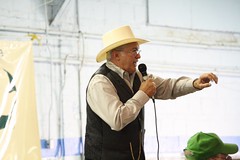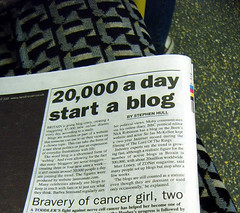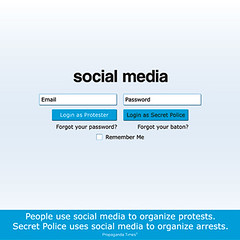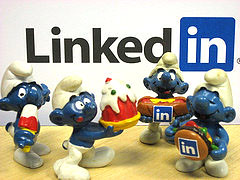This is the second post in my mini promotional series about my latest book. This one was titled The Process Of Writing Leadership Is/Isn’t Easy, and I think the title is self explanatory; I could be wrong though. 🙂
 |
So, check that out, then come back and check out my latest book, being served on a silver platter with a lot of goodies, Leadership Is/Isn’t Easy. This post is what I’ve done in marketing it to this point, and it hasn’t been easy. Y’all know I’ll be plugging that book for at least a couple of weeks don’t you? lol
If you do click on that link you know that’s my attempt at a squeeze or landing page. It was crucial that I create that before I started any marketing. Truthfully, I spent time trying to get it mobile friendly but that got irksome; I mentioned that last time.
Marketing started around 1:30 Tuesday morning when I wrote the blog post that was going to announce it first. I gave it the title of the book with the addendum my latest book is here to let people know it was a new book and not a rehashing of my previous book on leadership. I talked a little bit about the process of writing that book, which I followed up here on Wednesday; I’ll come back to that.
I knew the first post was going out around 9:30. I also knew it would hit Twitter with that title. I knew I wanted to advertise it multiple times on Twitter but I also knew that you can’t use the same exact words more than once every 12 or 24 hours; I’m not quite sure which one it is but I never take any chances.
I didn’t want to overdo it so I ended up creating 7 different phrases, some where I put the hashtag on the first word of the book, some where I added the word “leadership” with a hashtag afterwards, and a few with words either leading the title or after the title. You don’t have to do a lot since you only have 140 characters to keep the same message while making it different.
I wanted to space out my message every 2 hours, and that worked with what I’d created. But I wasn’t done and I knew I’d be adding some other things here and there in other spaces, but would still be able to add one more thing to Twitter.
 |
Next on the list was writing an article on LinkedIn. I took a major chance and decided to make the title of the article the same as the title of the book, only I used “and” instead of “/”. Then I wrote an article talking about why leadership is easy for some people and hard for others. At the end of the article I wrote a short bio mentioning the book and adding my link. Not only that but I knew that my business blog goes to LinkedIn so I was hammering the name home. Savvy?
Next, I went to Facebook and added the sales link to my business page. I couldn’t add the link to the blog until it went live and I was scheduling the post on Facebook ahead of time. I mentioned when I added the link that I’d be adding the blog post about the book the next day. My intention there was to hope to build up a little bit of suspense, though I also know that few people from Facebook actually visit either of my blogs.
Later on, I decided to break ranks a little bit and put the link to the book on my personal page as well. I wasn’t sure that anyone would think about buying the book who’s in my personal space, but I figured they might be intrigued to see that I had put together a second book and might either look at it, like it or share it.
A few hours later I added the blog post to a group I’m in for local bloggers. I figured they might be intrigued a little bit also, but the site offers everyone who’s a part of it to share their blog posts there. I don’t do it all that often but I thought this was a day to do it.
I have two Google Plus pages, one that’s more personal and the other for my business. I added the blog post from my business blog to both pages and then I added the link to the book on my personal page and the community I run there called the Leadership Cafe. What I’m now realizing is that I didn’t add the link to the book on my business page, but I’m only connected to 10 people on that page, which I created so I could have a business video channel (which you don’t have to do now but did when I wanted the 2nd channel) so that’s not a big deal.
However, as I was adding the link to those pages I realized I was forgetting something… the video! I quickly made a short video using the Google Hangout way instead of doing it on my own computer. I did that because I thought it’d be easier to add annotations to it that would link to my blog and the book. Here’s that short video:
https://youtu.be/M5FZ__XXEck
I shared that video on both of my Google Plus channels. I’ve also added the link to that video to the other messages I’m posting on Twitter, along with the link to my LinkedIn article. That means I’m up to 10 messages I can rotate on Twitter. But there’s more. 😉
Wednesday I wrote the first part of this two part series about the book, the process of writing Leadership Is/Isn’t Easy, which mentions the name of the book in the link as you see, which gives me an 11th message. With this article I’ll have a 12th message; I keep hammering the title! I’ll be writing one more article on my business blog that mentions the book in the title in some fashion for next week; I’m just not sure what it’ll be at this moment.
This is my first real shot at marketing something a lot. The fear is that it might be the wrong topic. Some people think leadership books are kind of boring and dull; truthfully, a lot of them are. I’m not a “system” guy when it comes to leadership; I tell people what it is and I give straight advice, recommendations and tales that I know every leader’s going to have to deal with at some point.
So there you are, an idea of how social media marketing works. It takes a lot of work and a lot of repetition.
I hope you at least check out the link to the book, even if you’re not a buyer, and if you see anything from me mentioning the book, please share it; I’m not ashamed to ask that of you. lol If you think I’ve missed anything, let me know.






